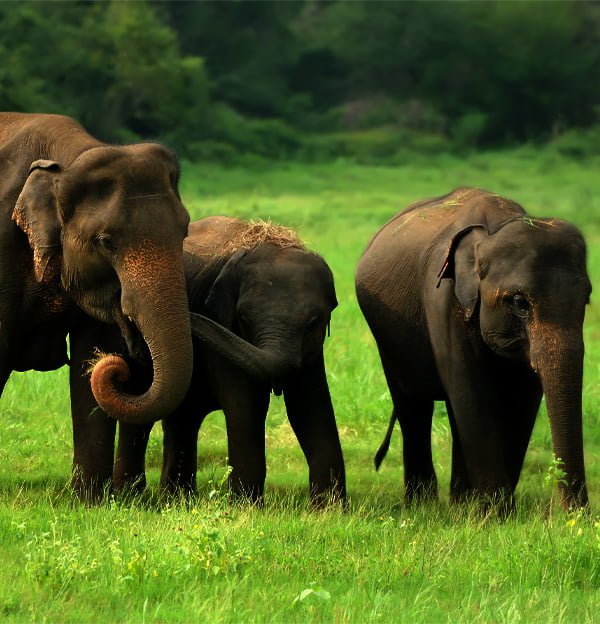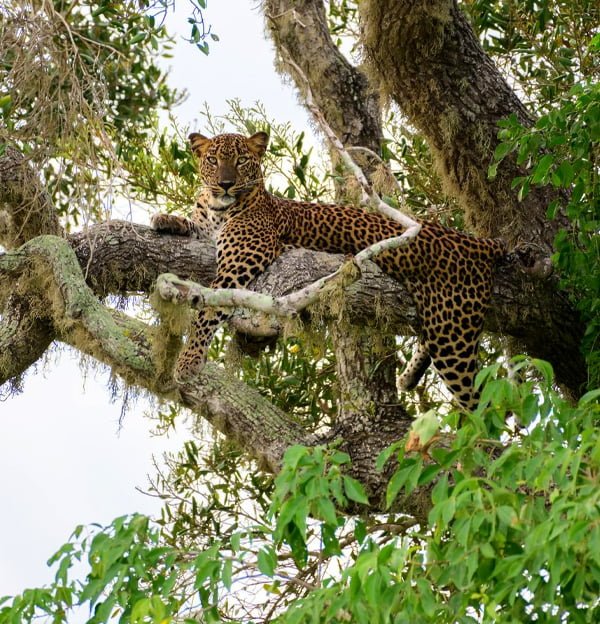Sri Lanka’s ‘Big Five’ game, Thrives Here.
With its diverse habitats, rich biodiversity, and storied history dating back to 500 BC, Yala National Park stands as Sri Lanka’s premier wildlife destination. Established as a Game Reserve in 1938, Yala encompasses five distinct blocks, spanning a vast area of 151,778 hectares. The park showcases a variety of ecosystems, including dunes, scrub forests, riverine forests, rocky outcrops, secondary forests, and coastal lagoons with mangrove forests.
Yala National Park is renowned for its impressive wildlife population, boasting 44 mammal species and over 200 species of birds. However, its most notable inhabitants are the leopards, with Yala reputedly harboring the highest concentration of these elusive big cats in the world. Of particular interest is the endangered leopard subspecies Panthera pardus kotiya, which is endemic to Sri Lanka and finds sanctuary within the park’s borders.
Here are more detailed insights into Yala National Park:
Geographical Location: Yala National Park is situated in the southeastern part of Sri Lanka, spanning the districts of Hambantota and Monaragala. It is approximately 300 kilometers southeast of Colombo, the capital city, and is easily accessible by road.
Landscape and Habitats: Yala National Park is renowned for its diverse and picturesque landscapes, which include scrub forests, grasslands, sand dunes, rocky outcrops, and coastal lagoons. The park is intersected by several water bodies, including rivers and streams, which provide vital water sources for wildlife. Yala’s varied habitats support a wide range of flora and fauna, making it a hotspot for biodiversity in Sri Lanka.
Wildlife: Yala National Park is home to an impressive array of wildlife, including 44 mammal species, over 200 species of birds, and numerous reptiles, amphibians, and insects. The park’s most famous residents are its leopards, which are among the highest density of leopards in the world. Other notable mammals found in Yala include Asian elephants, sloth bears, water buffalo, sambar deer, spotted deer, wild boar, and langur monkeys. Birdwatchers will delight in spotting endemic and migratory bird species, including the painted stork, lesser adjutant, and Sri Lankan junglefowl.
Safari Experience: Exploring Yala National Park on a safari excursion is a must-do activity for visitors. Jeep safaris are the most popular way to traverse the park’s rugged terrain and encounter wildlife up close. Knowledgeable safari guides lead tours through the park, providing insights into the behavior and ecology of its inhabitants. Visitors can choose from various safari options, including morning, afternoon, and full-day excursions, each offering unique opportunities to observe the park’s wildlife and landscapes.
Cultural and Historical Significance: Yala National Park holds cultural and historical significance dating back to ancient times. The park’s name “Yala” is believed to be derived from the Sinhala word for “water” or “lake,” reflecting its numerous water sources. Yala’s surroundings are dotted with archaeological sites, including ancient ruins, rock inscriptions, and Buddhist monasteries, providing glimpses into the region’s rich history and heritage.
Conservation Efforts: Yala National Park plays a vital role in the conservation of Sri Lanka’s biodiversity and natural heritage. The park is actively involved in habitat conservation, wildlife research, and community outreach programs aimed at promoting sustainable tourism and protecting endangered species. Visitors can learn about these conservation efforts at the park’s visitor center and through educational activities conducted by park rangers.
Overall, Yala National Park offers a captivating blend of natural beauty, wildlife diversity, and cultural heritage, making it a premier destination for nature lovers and wildlife enthusiasts visiting Sri Lanka.













